Research carried out by the Precambrian Group:
Reinventing the planet
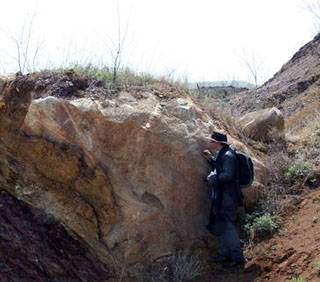
Neoproterozoic Climate Change
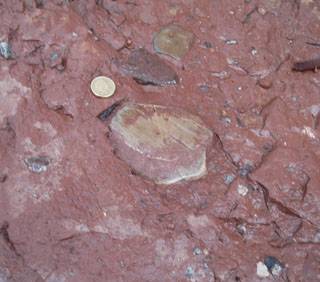
The Cryogenian Subcommission:
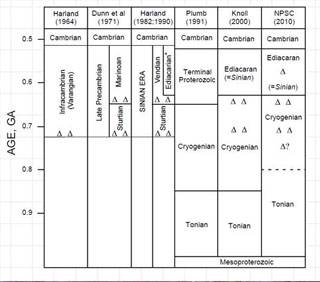
Early Proterozoic:
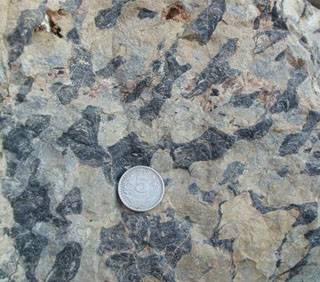
The Ediacaran-Cambrian boundary:
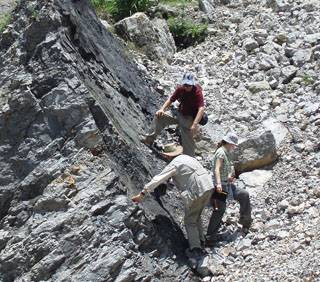
Precambrian Specific Facies:
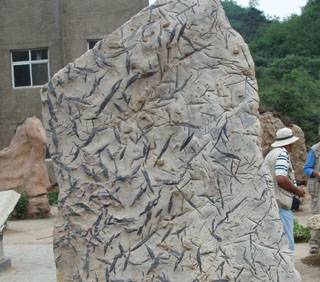
Strontium Isotope Stratigraphy:
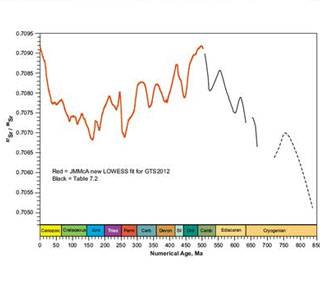
Other aspects of Sedimentary Geochemistry:
Low-temperature geochemistry can of course be applied to other research problems, and here are examples of more general applications:
Reinventing the planet
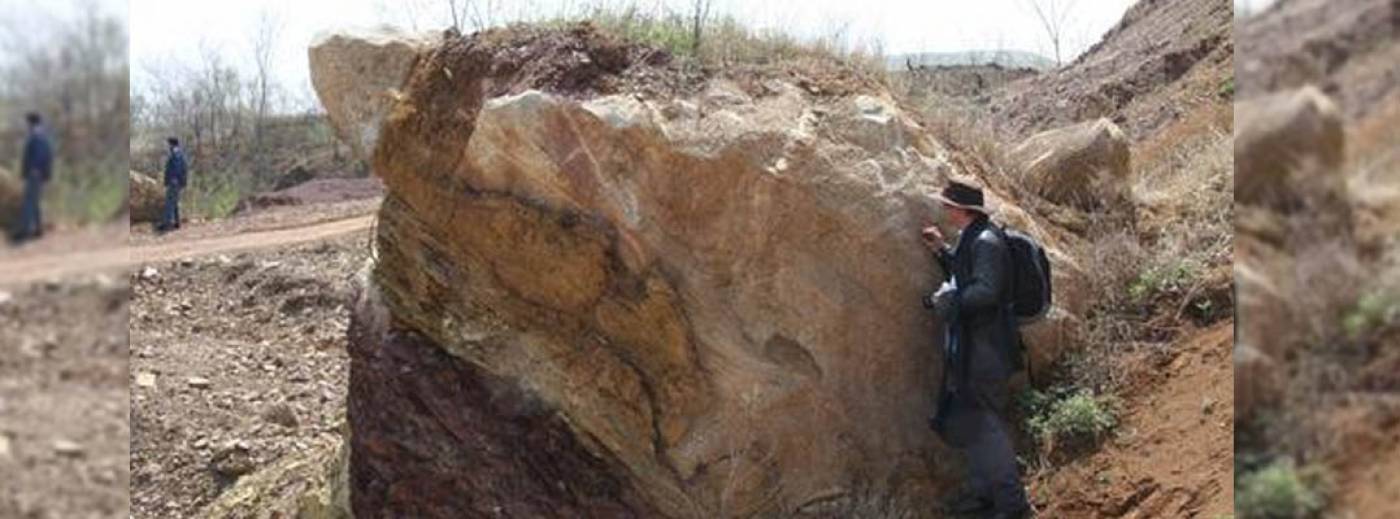
Stromatolites from near Dalian
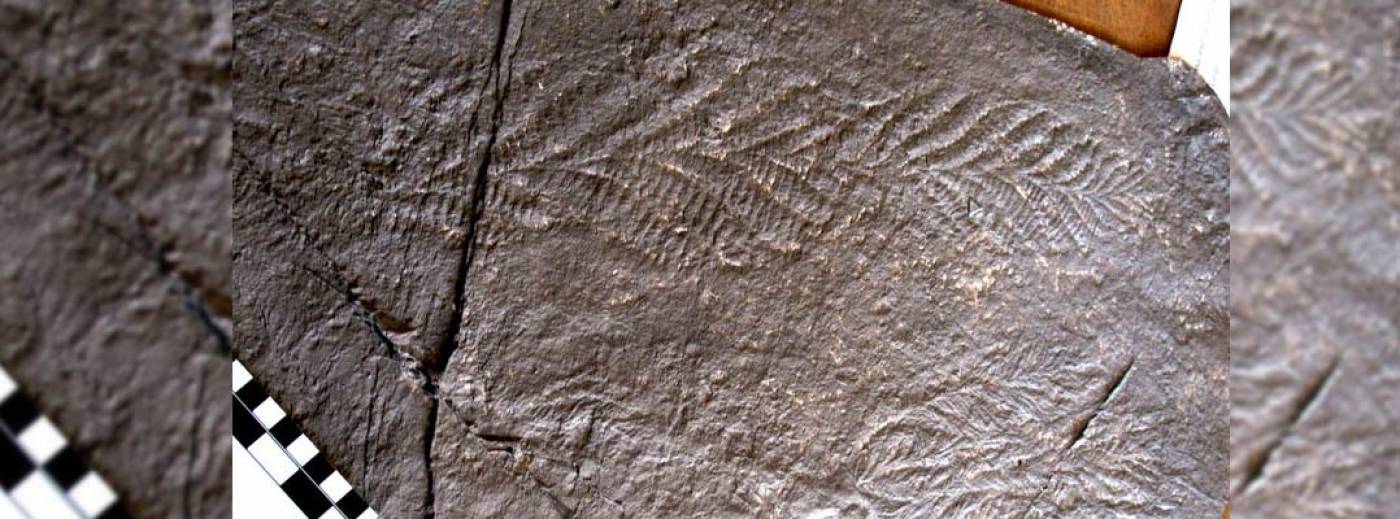
Ediacaran fossils of Charnwood Forest
The Neoproterozoic Era (1000-540 Ma) marked a key turning point in the development of the modern earth system. Crucial biological innovations towards further complexity took place amid carbon cycle instability that pushed climate to unprecedented extremes. Irreversible changes, such as the oxygenation of the deep ocean, also took place and may have been rooted in tectonically driven changes to terrestrial weathering regimes. Despite a dearth of supporting evidence, it is commonly presumed that a rise in atmospheric oxygen triggered the evolution of animals. However, new geochemical evidence (isotopic, iron speciation, redox-sensitive elements) reveal an altogether more complicated picture in which the spread of euxinia played an important role during the nascent stages of animal evolution. The challenge to future researchers lies in unraveling the complex entanglement of earth system changes during this pivotal episode. The Neoproterozoic Earth System is the focus of a new UK-based multidisciplinary project (Reinventing the Planet…). Marine and terrestrial strata from the UK and China are used as the basis of new geochemical and palaeontological studies, which along with existing datasets will be integrated and interrogated through the development of heuristic, spatial and evolutionary models.
Collaborators: Tim Lenton (Exeter), Andy Watson (UEA), Nick Butterfield (Cambridge), Simon Poulton (Leeds), Rachel Wood (Edinburgh), Phil Wilby (BGS), Dan Condon (NIGL), Maoyan Zhu (NIGPAS, Nanjing). Reinventing the planet forms one part of NERC’s research programme: ‘Long-term Coevolution of Life and the Planet’ which is coordinated and managed from UCL’s Department of Earth Sciences (www.lifeandplanet.net).
Related publications:
- Och, L. M., & Shields-Zhou, G. A. (2012). The Neoproterozoic oxygenation event: Environmental perturbations and biogeochemical cycling. Earth Science Reviews, 110(1-4), 26-57. doi:10.1016/j.earscirev.2011.09.004
- Shields-Zhou, G. A., & Och, L. M. (2011). The case for a Neoproterozoic Oxygenation Event: geochemical evidence and biological consequences. GSA Today, 21(3), 4-11. doi:10.1130/GSATG102A.1
Neoproterozoic Climate Change
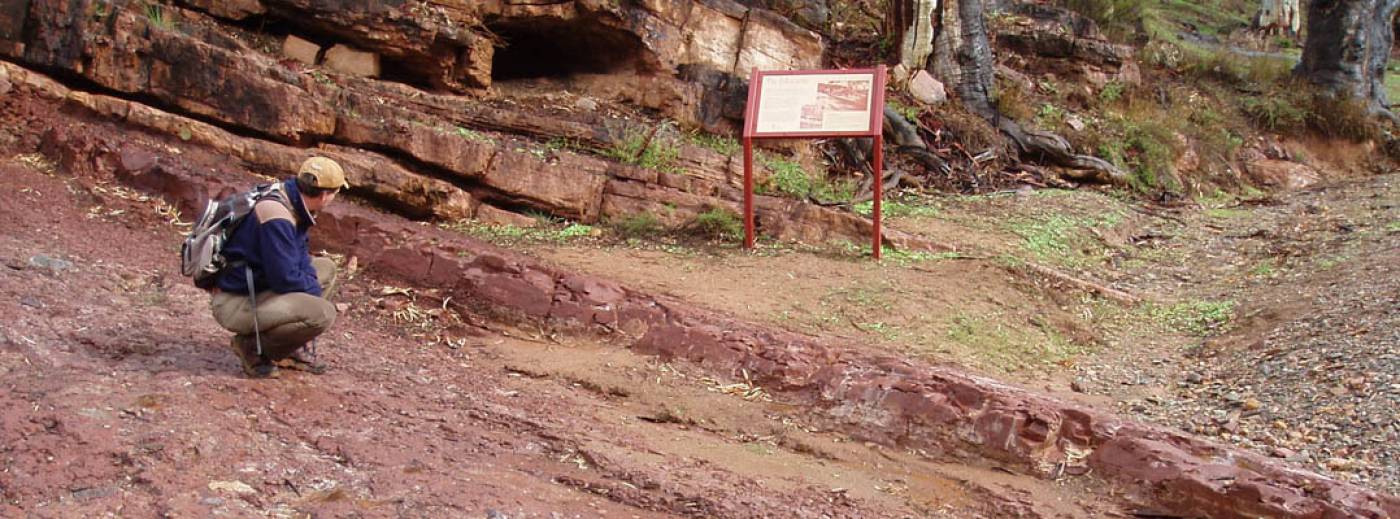
Basal Ediacaran GSSP in Australia
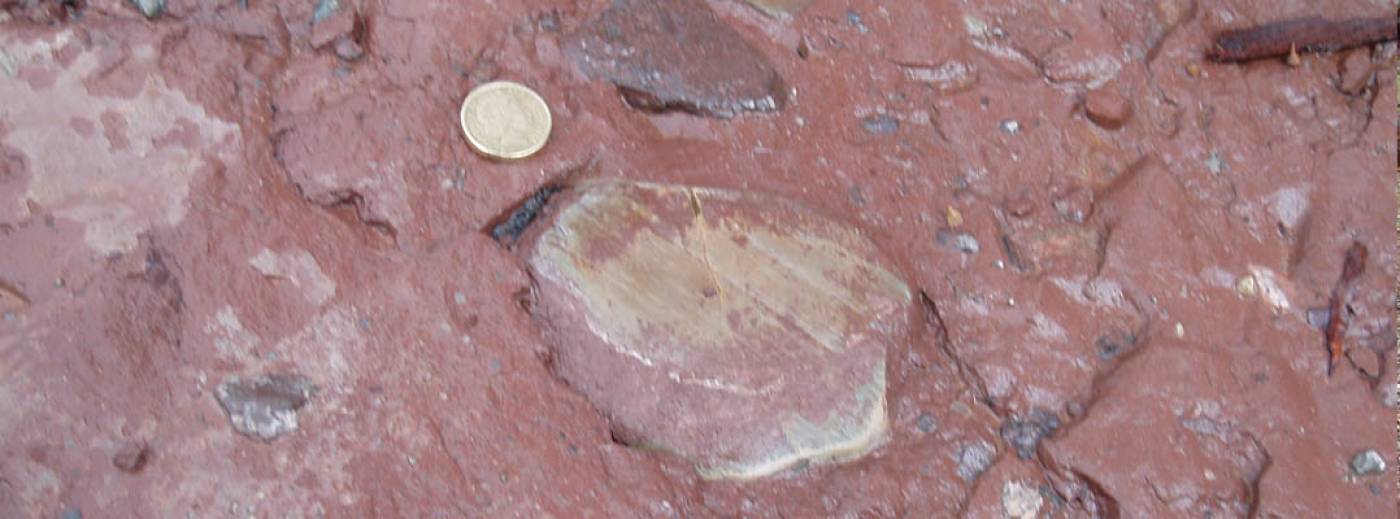
Striated facted glacigenic clast from the top of the Elatina Formation Enorama Creek Australia
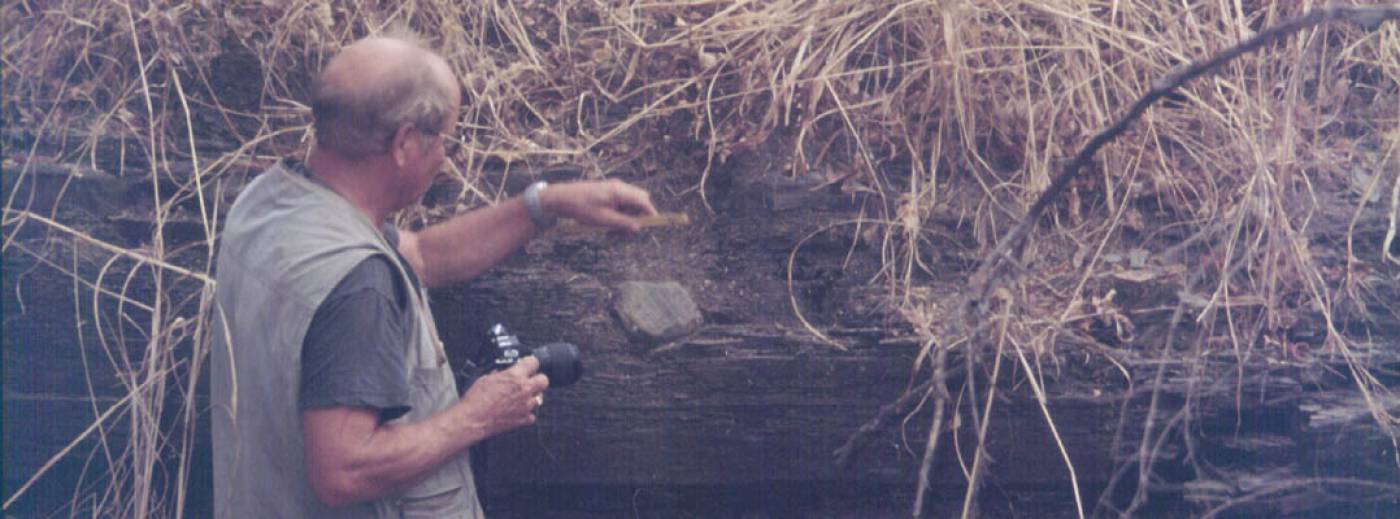
Dropstones in Senegal with Max Deynoux
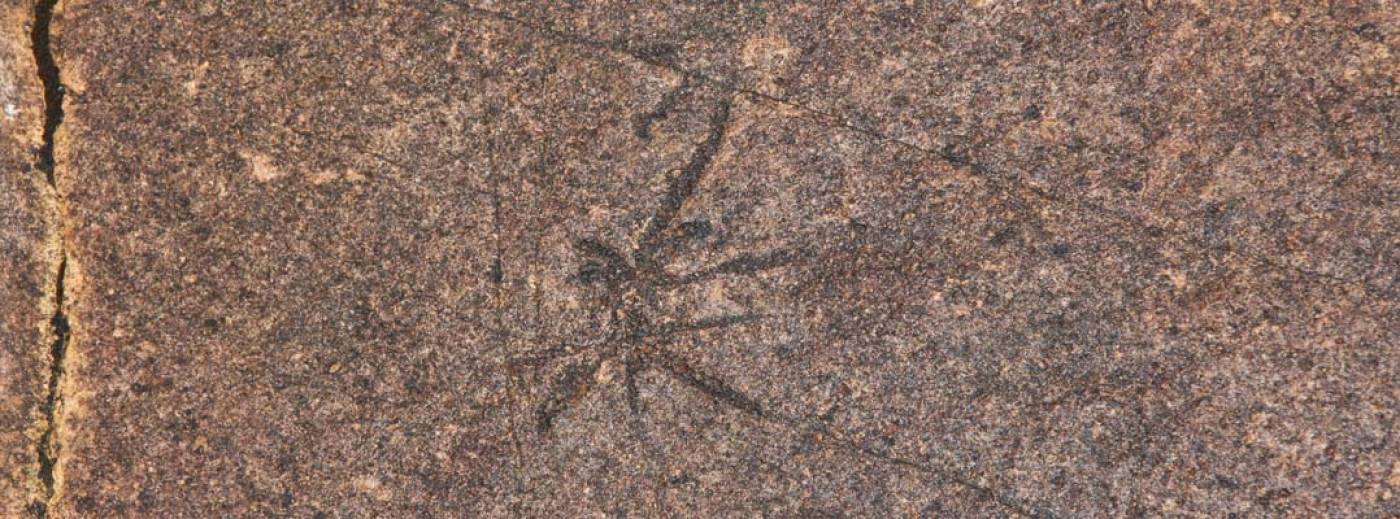
Possible glendonites from below the Port Askaig Formation Garbh Eilach Scotland
The Neoproterozoic Era (1000–540 Ma) is famous for its ice ages, especially within the appropriately named ‘Cryogenian Period’ (circa 750-635 Ma). The Cryogenian glaciations were prolonged disturbances to the Earth System that were more severe than any since and have left a record of glacigenic sediments on all continents. We have studied glacigenic sediments and associated strata (ironstones, cap carbonates, barite, phosphorite) in Scotland, South China, NW Africa and Australia. Most recently, we have been looking at glacigenic and other enigmatic deposits of uncertain age on the North China craton. We hope to be able to fit the Fengtai and Luoquan formations into the global age framework of the Neoproterozoic Era.
Related publications:
- Arnaud, E., Halverson, G. P., & Shields-Zhou, G. (eds.) (2011). The Geological Record of Neoproterozoic Glaciations. Geological Society of London Memoir 36, 721pp.
- Shields, G. A., Deynoux, M., Strauss, H., Paquet, H., & Nahon, D. (2007). Barite-bearing cap carbonates of the Taoudéni Basin, northwest Africa: sedimentary and isotopic evidence for methane seepage from permafrost after a Neoproterozoic glaciation.. Precambrian Research, 153, 209-235. doi:10.1016/j.precamres.2006.11.011
- Brasier, M. D., & Shields, G. (2000). Neoproterozoic chemostratigraphy and correlation of the Port Askaig glaciation, Dalradian Supergroup of Scotland. Journal of the Geological Society, 157, 909-914.
The Cryogenian Subcommission
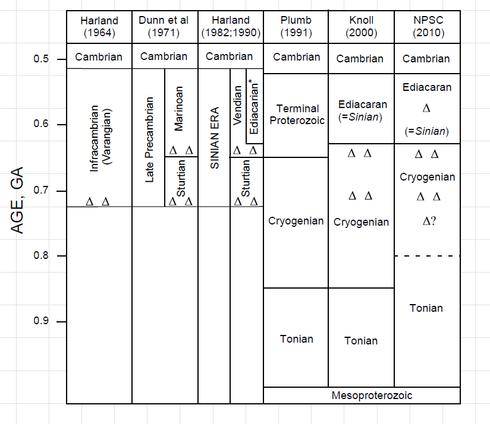
The Cryogenian Subcommission of the International Commission on Stratigraphy (ICS) is the primary body for facilitation of international communication and scientific cooperation in Cryogenian System stratigraphy and a range of multidisciplinary activities directed at better understanding Earth system evolution during the interval from 850 –635 Ma. Its priority is the unambiguous definition, by means of global stratotype sections and points (GSSP), of a hierarchy of chronostratigraphic units that provide the framework for global correlation.The most pressing goal of the subcommission is the establishment for the first time a rock-based GSSP for the base of the Cryogenian that will also serve as the top of the underlying Tonian. The subcommission also exists to facilitate international collaboration in research on Cryogenian stratigraphy and earth history through sponsored field trips, workshops, and meetings. More work related to the subcommission.
Related publications:
- Shields-Zhou, G. A., Hill, A. C., & Macgabhann, B. A. (2012). The Cryogenian Period. In F. M. Gradstein (Ed.), The Geologic Time Scale 2012. Elsevier Science Limited. doi:10.1016/B978-0-444-59425-9.00017-X
- Shields-Zhou, G. A., Hill, A. C., & Macgabhann, B. A. (2012). The Cryogenian Period. In F. M. Gradstein (Ed.), The Geologic Time Scale 2012. Elsevier Science Limited. doi:10.1016/B978-0-444-59425-9.00017-X
Early Proterozoic
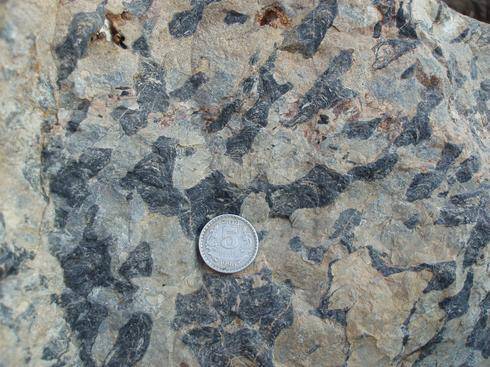
Collaborators:Ritesh Purohit (India)
Related publications:
- Papineau, D., Purohit, R., Fogel, M.L., & Shields-Zhou, G.A. (2013) High phosphate availability as a possible cause for massive cyanobacterial production of oxygen in the Paleoproterozoic atmosphere, Earth and Planetary Science Letters.
- Papineau, D., Purohit, R., Goldberg, T., Pi, D. H., Shields, G. A., Bhu, H., & Fogel, M. L. (2009). High primary productivity and nitrogen cycling after the Paleoproterozoic phosphogenic event in the Aravalli Supergroup, India. Precambrian Research, 171 (1-4), 37-56. doi:10.1016/j.precamres.2009.03.005
The Ediacaran-Cambrian boundary
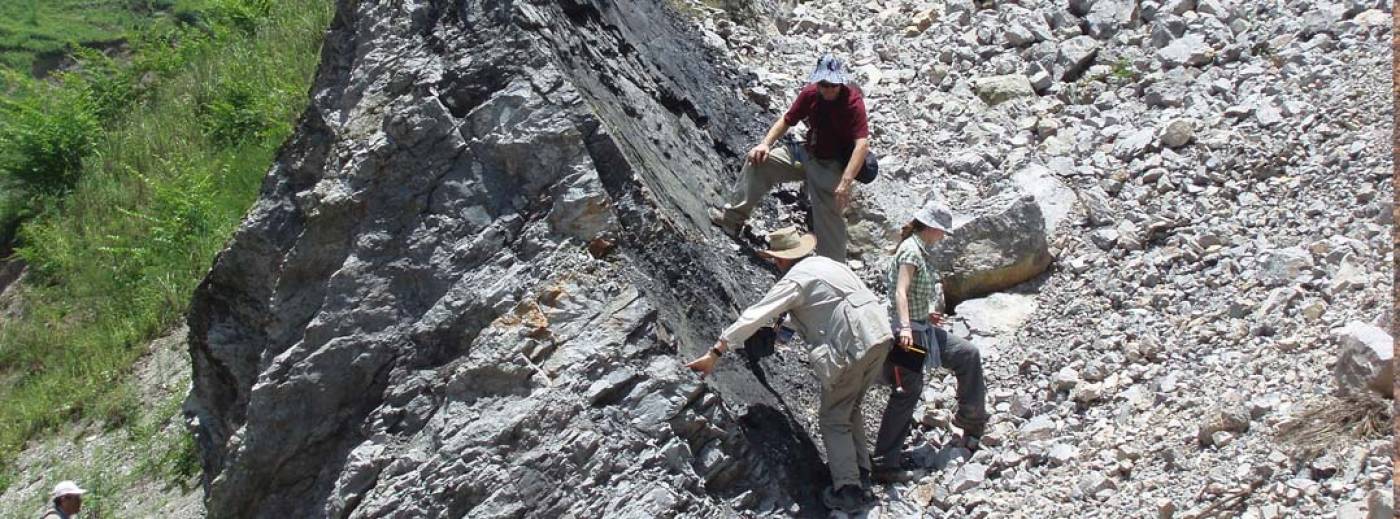
Weng an phosphorite mine
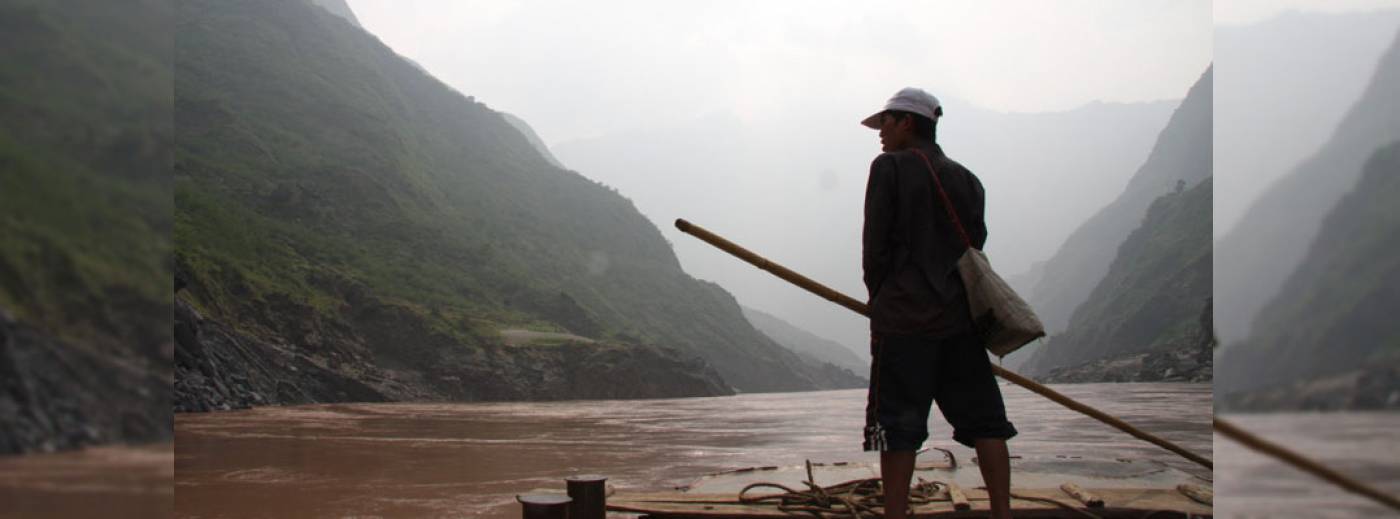
The way to Xiaotan section northern Yunnan
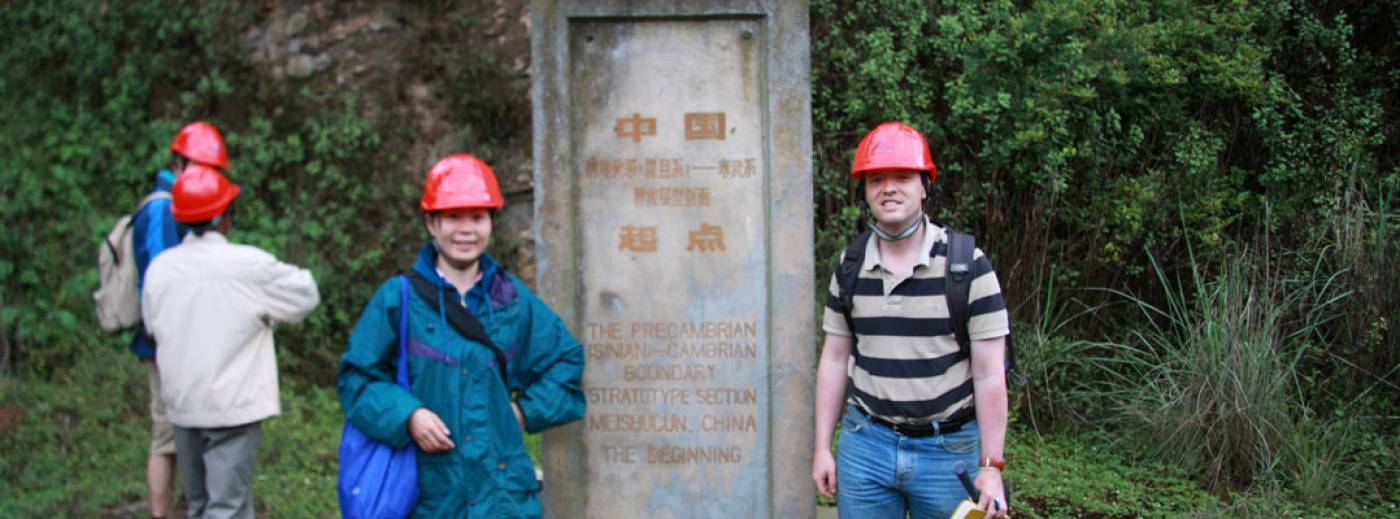
Meishucun Precambrian-Cambrian boundary section Yunnan
The late Neoproterozoic successions of South China comprise some of the most complete and well-preserved records of the Ediacaran-Cambrian transition. This transition is an intriguing interval beginning with the evolution and early extinctions of the first bilaterian metazoans during the Ediacaran Period to their dominance of pelagic and benthic realms by the end of the early Cambrian. Isotopic data reveal that this was a noisy transition of increasing baseline δ13C values punctuated by extreme isotopic oscillations, which diminish once modern marine ecosystems and penetrative bioturbation had become firmly established by ~520 Ma. Various chemical proxies reveal the South China ocean margins to have experienced extreme lateral and vertical redox gradients. Disentangling the complex interactions between biological evolution and biogeochemical cycling during this key interval is an important part of our research past and present.
Collaborators: Hongfei Ling (Nanjing University); Maoyan Zhu (NIGPAS, Nanjing); Richard Boyle and Tim Lenton (Exeter); Sören Jensen (Spain)
Related publications:
- Shields-Zhou, G.A. & Zhu, M. (2012) Changes in biogeochemical cycling across the Ediacaran-Cambrian transition in South China. Precambrian Researchdoi:10.1016/j.precamres. 2012.10.011.
- Shields, G. A., Strauss, H., Howe, S. S., & Siegmund, H. (1999). Sulphur isotope compositions of sedimentary phosphorites from the basal Cambrian of China - Implications for Neoproterozoic-Cambrian bigeochemical cycling. Journal of Geological Society, 156, 943-957.
- Brasier, M. D., Shields, G. A., Kuleshov, V. N., & Zhegallo, E. A. (1996). Integrated chemo- and biostratigraphic calibration of early animal evolution; Neoproterozoic-early Cambrian of southwest Mongolia. Geological Magazine, 133, 445-485.
Precambrian specific facies
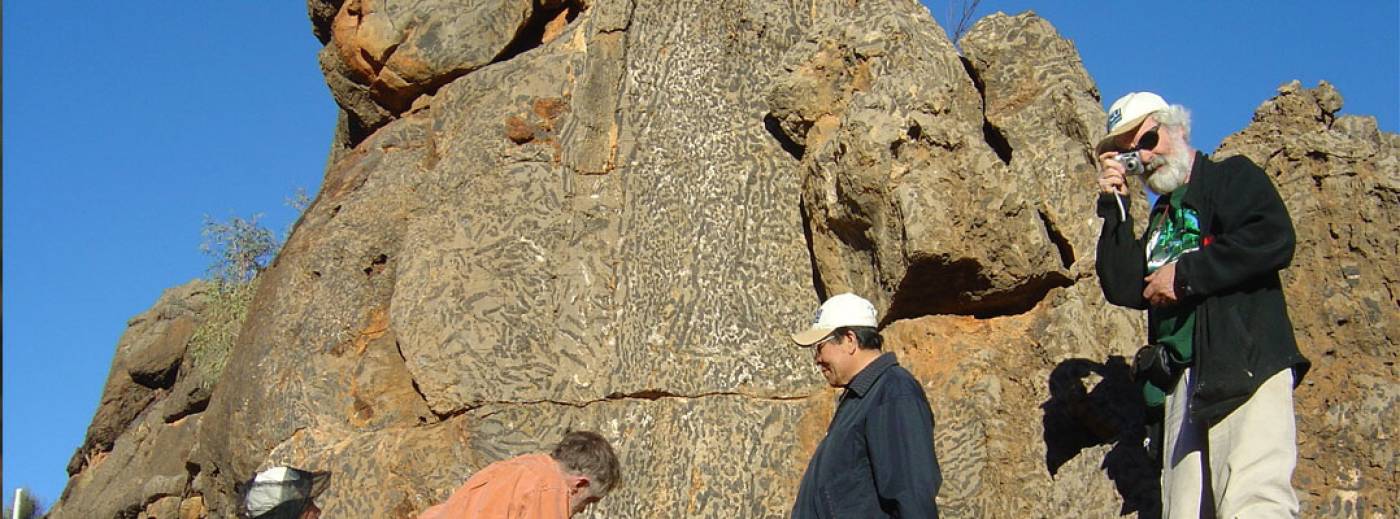
Weird MT structures of the 0.8 Ga Bitter Springs Fn central Australia
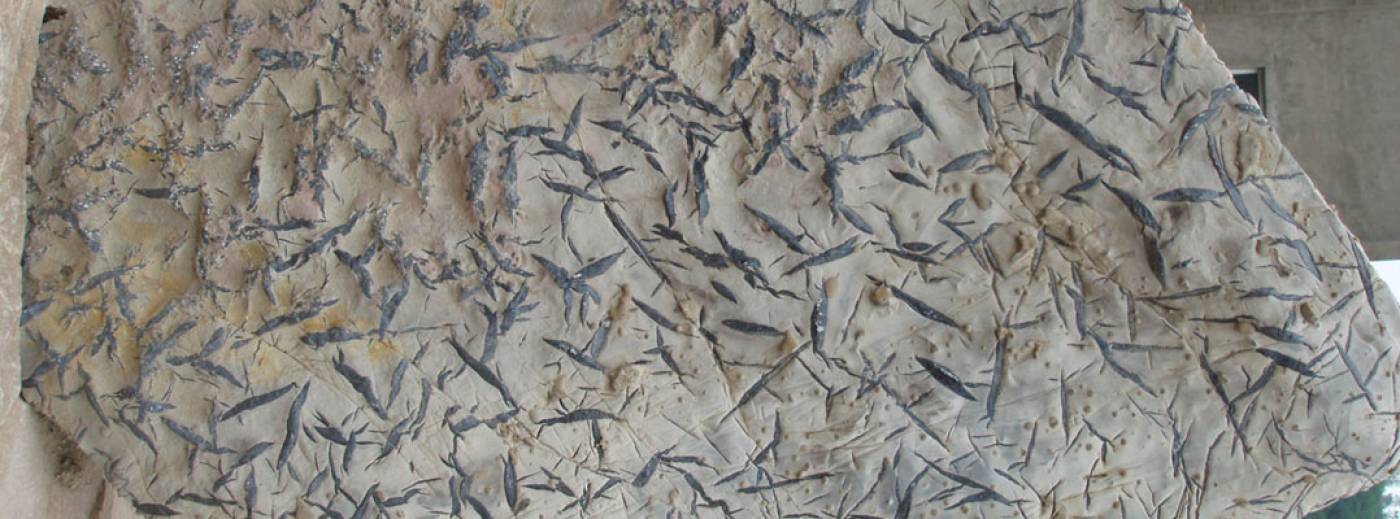
Weird MT structures of the 0.8 Ga Bitter Springs Fn central Australia
Molar-tooth structures are intricately crumpled, microsparry calcite fissure cements that formed during the Precambrian. Strontium isotope stratigraphy constrains the last occurrence of molar-tooth structure (MT) in the geological record to about 720 Ma (Tonian-Cryogenian transition). Although the disappearance of MT is commonly ascribed to the influence of metazoans on sediment cohesion, this now seems less plausible because there is no evidence for significant sediment disruption by metazoans before the Ediacaran Period. It seems more likely that the restriction of MT to the ‘boring billion’ interval from about 1.9 Ga to 0.7 Ga is telling us about chemical changes in Earth’s surface environment at those times. Other intriguing and unusual sedimentary features, e.g. stromatolites, sedimentary talc, phosphorites, cap carbonates provide relatively unexploited clues to broader changes in earth’s exogenic system.
Related publications:
- Shields, G. A. (2005). Neoproterozoic cap carbonates: a critical appraisal of existing models and the plumeworld hypothesis. Terra Nova, 17(4), 299-310. doi:10.1111/j.1365-3121.2005.00638.x
- Shields, G. A. (2002). 'Molar-tooth microspar': A chemical explanation for its disappearance ~ 750 Ma. Terra Nova, 14(2), 108-113.
- Shields, G. A., Stille, P., & Brasier, M. D. (2000). Isotopic records across two phosphorite giant episodes compared: the Precambrian-Cambrian and the late Cretaceous-Recent. In C. Glenn, L. Prevot-Lucas, & J. Lucas (Eds.), Marine authigenesis: from global to microbial (pp. 103-116).
Strontium Isotope Stratigraphy
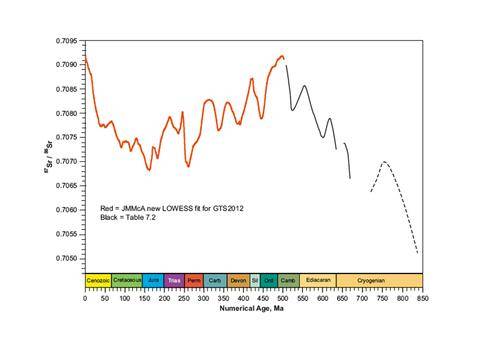
SIS rests on the assumption that the world's oceans are homogenous with respect to 87Sr/86Sr and always were so. Such uniformity of 87Sr/86Sr is expected because the residence time of Sr in the oceans today (≈ 106 years) is far longer than the time it takes currents to mix the oceans (≈ 103 years. The degree to which past oceans were so thoroughly mixed is unknown.
Before reporting, measured isotopic ratios for 87Sr/86Sr are normalised to a standard value of 0.1194 for 86/Sr/88Sr. This procedure corrects for isotopic fractionations that occur during mass spectrometric measurement and removes any natural fractionation. Nevertheless, natural fractionations can be measured using (presently) non-standard techniques and may have wider application in the future.
Reconstruction of the seawater 87Sr/86Sr curve before the Ordovician Period must overcome particular difficulties on two fronts: poor age constraints and a lack of well preserved materials for analysis. Lack of a global stratigraphic framework has necessitated the use of global calibration schemes, which integrate isotopic trends, geochronology with the emerging biostratigraphy.
Despite acknowledged difficulties, the use of SIS to correlate Neoproterozoic and Cambrian strata remains promising due to the major increase in seawater 87Sr/86Sr from ~0.705 to ~0.709, which occurred between about 850 and 500 Ma. A major aim of our research is to improve knowledge of the Precambrian seawater strontium isotope curve not only to enable its use for stratigraphic correlation but also to establish a tectonic context to earth system changes and biological evolution.
Collaborators: John McArthur (UCL); Matthew Thirlwall (Royal Holloway, London); Hongfei Ling (Nanjing University)
Related publications:
- Li, D., Ling, H. -F., Shields-Zhou, G. A., Chen, X., Cremonese, L., Och, L., Manning, C. J. (2012). Carbon and strontium isotope evolution of seawater across the Ediacaran-Cambrian transition: Evidence from the Xiaotan section, NE Yunnan, South China. Precambrian Research. doi:10.1016/j.chemgeo.2012.01.0202
- McArthur, J. M., Howarth, R. J., & Shields, G. A. (2012). Strontium isotope stratigraphy. In F. M. Gradstein (Ed.), The Geologic Time Scale 2012. Elsevier Science Limited. doi:10.1016/B978-0-444-59425-9.00007-X
- Shields, G. A. (2007). A normalised seawater strontium isotope curve: possible implications for Neoproterozoic-Cambrian weathering rates and the further oxygenation of the Earth. eEarth, 2, 35-42.
- Shields, G., & Veizer, J. (2002). Precambrian marine carbonate isotope database: Version 1.1. Geochemistry, Geophysics, Geosystems, 3. doi:10.1029/2001GC000266
- Shields, G. A. (1999). Working towards a new stratigraphic calibration scheme for the Neoproterozoic-Cambrian. Eclogae Geologicae Helvetiae, 92, 221-233.
Our work contributes to that of the University of London Strontium Isotope Stratigraphy Group
Other aspects of sedimentary geochemistry
Low-temperature geochemistry can of course be applied to other research problems, and here are examples of more general applications:
- Wotte, T., Shields-Zhou, GA., & Strauss, H. (2012). Carbonate-associated sulfate: Experimental comparisons of common extraction methods and recommendations towards a standard analytical protocol. Chemical Geology. doi:10.1016/j.chemgeo.2012.07.020
- Lewis, S. J., Shields, G. A., Kamber, B., & Lough, J. M. (2007). A multi-trace element coral record of land-use changes in the Burdekin River catchment, NE Australia.. Palaeogeography, Palaeoclimatology, Palaeoecology, 246, 471-487. doi:10.1016/j.palaeo.2006.10.021
- Jaffrés, J., Shields, G. A., & Wallmann, K. (2007). The oxygen isotope evolution of seawater: a critical review of a long-standing controversy and an improved geological water cycle model for the past 3.4 billion years. Earth Science Reviews, 83, 83-122. doi:10.1016/j.earscirev.2007.04.002
- Shields, G. A., & Webb, G. E. (2004). Has the REE composition of seawater changed over geological time? Chemical Geology, 204, 103-107.
- Perret, D., Crovisier, J. L., Stille, P., Shields, G. A., Mader, U., Avocat, T., & Chardonnens, M. (2003). Thermodynamic stability of waste glasses compared to leaching behaviour. Applied Geochemistry, 18, 1165-1184.
- Yang, J., Chen, J., An, Z., Shields, G. A., Tao, X., Zhu, H., & Chen, Y. (2000). Variations in the 87Sr/86Sr ratios of calcites in Chinese loess: a proxy for chemical weathering associated with the East Asia summer monsoon. Palaeogeography, Palaeoclimatology, Palaeoecology, 157, 151-159.
- Purton, L. M. A., Shields, G. A., Brasier, M. D., & Grimes, G. W. (1999). Metabolism controls Sr/Ca ratios in fossil aragonitic molluscs. Geology, 27, 1083-1086.
 Close
Close

